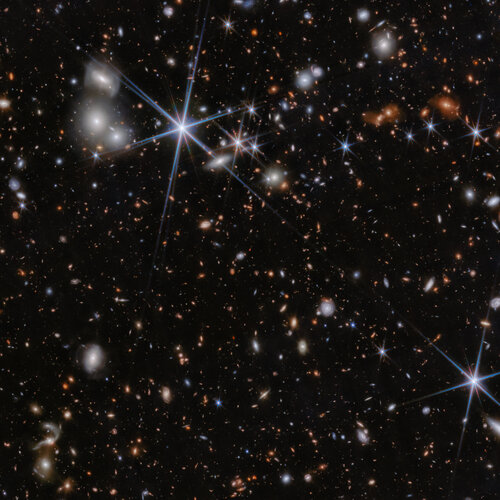Notes
[1] Gravitational waves are invisible ripples in the fabric of spacetime. Spacetime is a four-dimensional quantity, described by Einstein’s general theory of relativity, which fuses three-dimensional space with time. Mass warps spacetime, and gravity is actually the result of spacetime being curved by an object’s mass. Ripples through spacetime are created by the movement of any object with mass, and these are known as gravitational waves. Gravitational waves are constantly passing unnoticed through Earth and they are caused by some of the most violent and energetic events in the Universe. These include colliding black holes, collapsing stellar cores, merging neutron stars or white dwarf stars, the wobble of neutron stars that are not perfect spheres and possibly even the remnants of gravitational radiation created at the birth of the Universe.
More information
Webb is the largest, most powerful telescope ever launched into space. Under an international collaboration agreement, ESA provided the telescope’s launch service, using the Ariane 5 launch vehicle. Working with partners, ESA was responsible for the development and qualification of Ariane 5 adaptations for the Webb mission and for the procurement of the launch service by Arianespace. ESA also provided the workhorse spectrograph NIRSpec and 50% of the mid-infrared instrument MIRI, which was designed and built by a consortium of nationally funded European Institutes (The MIRI European Consortium) in partnership with JPL and the University of Arizona.
Webb is an international partnership between NASA, ESA and the Canadian Space Agency (CSA).
Contact:
ESA Media relations



